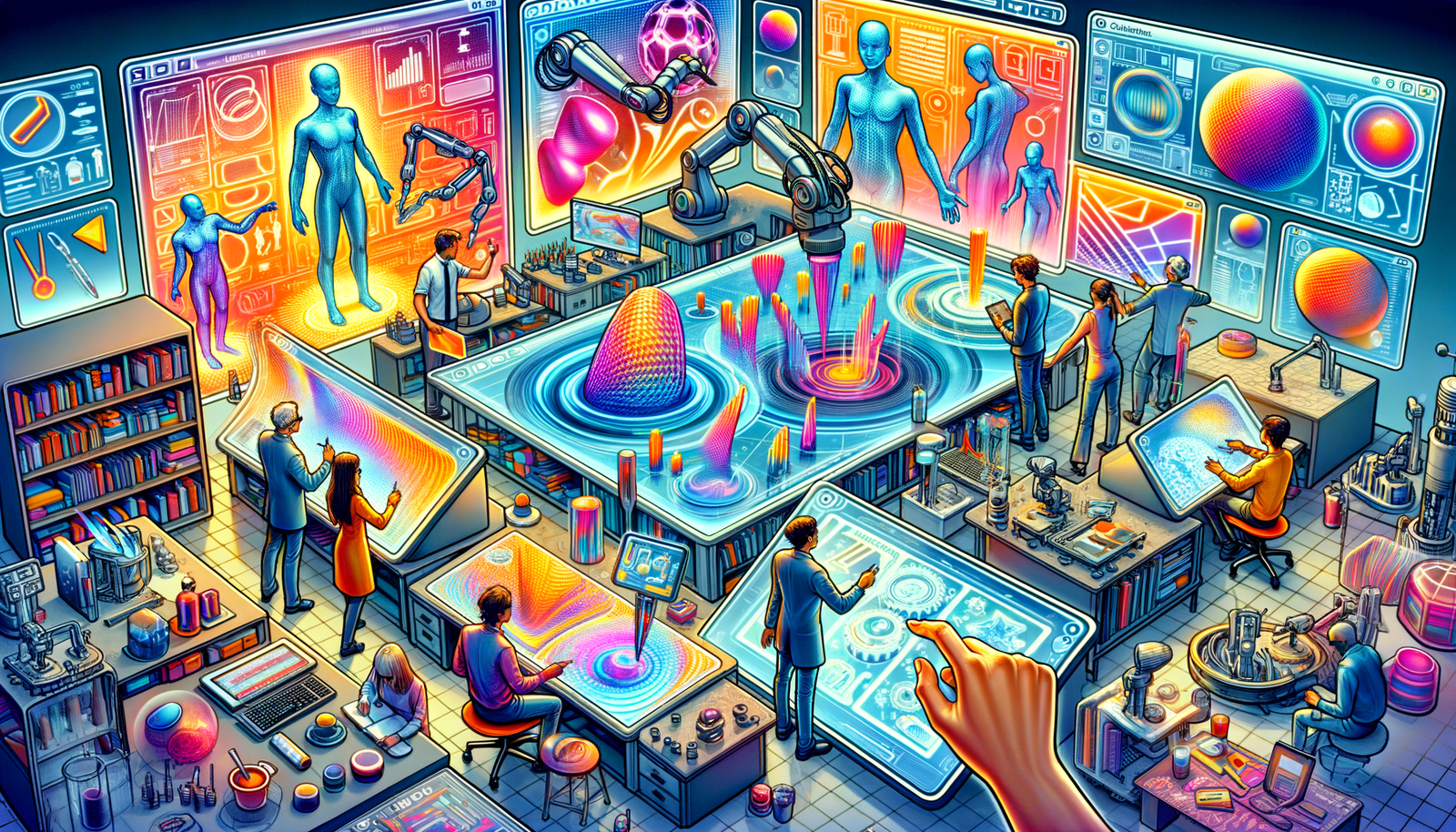Your Cart is Empty
Customer Testimonials
-
"Great customer service. The folks at Novedge were super helpful in navigating a somewhat complicated order including software upgrades and serial numbers in various stages of inactivity. They were friendly and helpful throughout the process.."
Ruben Ruckmark
"Quick & very helpful. We have been using Novedge for years and are very happy with their quick service when we need to make a purchase and excellent support resolving any issues."
Will Woodson
"Scott is the best. He reminds me about subscriptions dates, guides me in the correct direction for updates. He always responds promptly to me. He is literally the reason I continue to work with Novedge and will do so in the future."
Edward Mchugh
"Calvin Lok is “the man”. After my purchase of Sketchup 2021, he called me and provided step-by-step instructions to ease me through difficulties I was having with the setup of my new software."
Mike Borzage
Exploring the Future of Product Design: The Role of Design Software in Harnessing Adaptive and Smart Materials
July 03, 2024 3 min read


Introduction to Adaptive and Smart Materials
Adaptive and smart materials represent a groundbreaking shift in the materials science field, offering the ability to change their properties in response to external stimuli such as temperature, pressure, or electric and magnetic fields. These materials stand at the forefront of innovation in product design, enabling creations that were once thought to be science fiction. The journey from traditional materials to these intelligent materials encapsulates a significant evolution in the history of material innovation. This evolution has been paralleled by advancements in design software, which now enables designers and engineers to accurately model and simulate the behavior of adaptive and smart materials, thereby unlocking new realms of functionality and application in product design.
Software Tools and Technologies
The design and simulation of adaptive and smart materials are supported by an array of software tools and technologies that have transformed the design process. These include:
- CAD (Computer-Aided Design) software equipped with advanced material simulation capabilities, enabling designers to visualize and test their creations under real-world conditions.
- CAE (Computer-Aided Engineering) tools that provide detailed analysis of material behavior under various stressors, offering insights into durability and performance.
- Specialized software tailored for smart materials, which allows for the programming of material responses to different environmental stimuli.
The integration of these tools with traditional design processes has not only enhanced the functionality of products but also opened up new avenues for innovation, making the impossible possible.
Applications in Product Design
The application of adaptive and smart materials spans across various industries, demonstrating their versatility and potential to revolutionize product design. Notable examples include:
- Wearable technology that adapts to the user's body temperature or activity level, providing personalized comfort and performance.
- Automotive components that can change shape or properties to improve aerodynamics, fuel efficiency, or safety in response to driving conditions.
- Building materials designed to adjust to environmental conditions, such as temperature and humidity, optimizing energy efficiency and comfort.
These applications underscore the transformative impact of adaptive and smart materials, offering a glimpse into a future where products are not only more efficient and effective but also more in tune with their environment and the people who use them.
Future Trends and Challenges
As we look to the future, the horizon of possibilities for adaptive and smart materials continues to expand. Emerging trends include the exploration of bio-inspired designs that mimic the innate adaptability of living organisms, promising a new generation of materials that are both more efficient and sustainable. Advances in nanotechnology are also set to play a pivotal role, enabling the creation of materials with unprecedented levels of responsiveness and intelligence.
However, the path forward is not without its challenges. Designers and engineers face hurdles such as high material costs, complex manufacturing processes, and the need for a multidisciplinary approach to material innovation. These challenges underscore the importance of continued investment in design software, which remains critical in navigating these complexities and unlocking the full potential of adaptive and smart materials.
In conclusion, as we stand on the brink of a new era in material science, the role of design software in shaping the future of product design has never been more vital. By harnessing the power of these advanced tools, designers and engineers are not only able to overcome the barriers of today but are also paving the way for a world where the boundaries between material and product, between the artificial and the natural, are seamlessly blurred.
Also in Design News

Rhino 3D Tip: Reliable Rhino–Grasshopper to Excel CSV Pipeline
January 03, 2026 2 min read
Read More
Cinema 4D Tip: Subsurface Scattering Best Practices for Cinema 4D
January 03, 2026 2 min read
Read MoreSubscribe
Sign up to get the latest on sales, new releases and more …



